どうも「原爆投下は意図的に民間人を標的にしたものである。」が真実の様である。
「間違ってはならない:原爆投下は意図的に民間人を標的にしたものである。広島と長崎が選ばれたのは、手つかずの自然が残っており、原爆の威力を十分に発揮できたからである。・・・」
「Hiroshima, Nagasaki Bombings Were Needless, Said World War II’s Top US Military Leaders」
「広島、長崎 爆撃は不要だった、第二次世界大戦のトップ米軍指導者 Hiroshima, Nagasaki Bombings Were Needless, Said World War II’s Top US Military Leaders
これらの大規模な民間人の虐殺についての神話は、米国の軍国主義について考えることをゆがめるMythology about these mass civilian slaughters warps thinking about US militarism
広島と長崎 の原爆投下の記念日は、アメリカの歴史の要となる神話—を破壊する機会を提供します 日本の降伏、そして帝国の本島の軍事征服で他の方法で亡くなった50万人の米兵を救います。 The anniversaries of the atomic bombings of Hiroshima and Nagasaki present an opportunity to demolish a cornerstone myth of American history — that those twin acts of mass civilian slaughter were necessary to bring about Japan’s surrender, and spare a half-million US soldiers who’d have otherwise died in a military conquest of the empire’s home islands.
この神話を攻撃する人々は、しばしば愛国心が強く、知識不足、またはその両方として反射的に解雇されます。しかし、従来の知恵に対する最も説得力のある目撃者は、1945年8月の情勢を独自に把握した愛国者でした—第二次世界大戦のアメリカの上級軍事指導者。Those who attack this mythology are often reflexively dismissed as unpatriotic, ill-informed or both. However, the most compelling witnesses against the conventional wisdom were patriots with a unique grasp on the state of affairs in August 1945 — America’s senior military leaders of World War II.
最初に彼らが言わなければならないことを聞いてから、彼らをあまり公表されていない信念に導いた重要な事実を調べましょう: Let’s first hear what they had to say, and then examine key facts that led them to their little-publicized convictions:
- ドワイトアイゼンハワー将軍General Dwight Eisenhower 計画された爆撃の学習について:“私はうつ病の感情を意識しており、[戦争長官スティムソン]私の重大な不安に声をかけていました, まず、日本はすでに敗北しており、爆弾を投下することは完全に不要であるという私の信念に基づいて, 第二に、アメリカの命を救うための手段としてもはや雇用が義務付けられていない武器を使用することで、我が国は世界の意見に衝撃を与えるべきではないと思ったからです。その瞬間、日本は‘ face ’の損失を最小限に抑えて降伏する方法を模索していたと私は信じています。”on learning of the planned bombings: “I had been conscious of a feeling of depression and voiced to [Secretary of War Stimson] my grave misgivings, first on the basis of my belief that Japan was already defeated and that dropping the bomb was completely unnecessary, and secondly because I thought that our country should avoid shocking world opinion by the use of a weapon whose employment was, I thought, no longer mandatory as a measure to save American lives. It was my belief that Japan was, at that very moment, seeking some way to surrender with a minimum loss of ‘face’.”
- ウィリアム・リーヒー提督Admiral William Leahy,, トルーマンの首席補佐官:“この野蛮な武器の使用は、日本との戦争において実質的な支援はありませんでした。効果的な海上封鎖と通常兵器による爆撃の成功により、日本人はすでに敗北し、降伏する準備ができていました。” Truman’s Chief of Staff: “The use of this barbarous weapon…was of no material assistance in our war against Japan. The Japanese were already defeated and ready to surrender because of the effective sea blockade and the successful bombing with conventional weapons.”
- カーティス・ルメイ少将Major General Curtis LeMay, , 21番目の爆撃機コマンド:“戦争は終わったでしょう 21st Bomber Command: “The war would have been over in 2週間two weeks ロシア人が入らず、原爆なしで…原爆は戦争の終わりとは全く関係がありませんでした。” without the Russians entering and without the atomic bomb…The atomic bomb had nothing to do with the end of the war at all.”
- ハップアーノルド将軍General Hap Arnold,, 米陸軍空軍:“日本人が自分の空気の制御を失っていたため、最初の原爆が落下する前でさえ、日本の立場は絶望的でした。” “ US Army Air Forces: “The Japanese position was hopeless even before the first atomic bomb fell, because the Japanese had lost control of their own air.” “それIt 原爆か原爆なしか、日本人はすでに崩壊の危機に瀕しているように常に私たちに現れました。” always appeared to us that, atomic bomb or no atomic bomb, the Japanese were already on the verge of collapse.”
- ラルフバードRalph Bard,, 海軍長官:“日本人は平和の準備ができていて、彼らはすでにロシア人とスイス人に近づいていました…私の意見では, 私たちが原爆を使用する前に、日本戦争は本当に勝利しました。” Under Secretary of the Navy: “The Japanese were ready for peace, and they already had approached the Russians and the Swiss…In my opinion, the Japanese war was really won before we ever used the atom bomb.”
- 准将カーター・クラークBrigadier General Carter Clarke, 軍事情報官, military intelligence officer トルーマンの傍受されたケーブルの要約を作成した人:“それを行う必要がなく、それを行う必要がないことがわかったとき…2つの原子爆弾の実験として[広島と長 ⁇ ]を使用しました。他の多くの高官の将校が同意した。” who prepared summaries of intercepted cables for Truman: “When we didn’t need to do it, and we knew we didn’t need to do it…we used [Hiroshima and Nagasaki] as an experiment for two atomic bombs. Many other high-level military officers concurred.”
- 艦隊提督チェスターニミッツFleet Admiral Chester Nimitz, 太平洋艦隊司令官:“広島と長 ⁇ での原子爆弾の使用は、日本との戦争において重要な支援にはなりませんでした。日本人はすでに敗北し、降伏する準備ができていました。”, Pacific Fleet commander: “The use of atomic bombs at Hiroshima and Nagasaki was of no material assistance in our war against Japan. The Japanese were already defeated and ready to surrender.”
日本人はサードパーティの外交ルートを通じて触手を出し、1945年8月6日と9日の原爆投下の数週間前に戦争を終わらせようとしていました。 日本の海軍と空軍は破壊され、その祖国は海上封鎖を受け、同盟爆撃はほとんど抵抗しなかった。Putting out feelers through third-party diplomatic channels, the Japanese were seeking to end the war weeks before the atomic bombings on August 6 and 9, 1945. Japan’s navy and air forces were decimated, and its homeland subjected to a sea blockade and allied bombing carried out against little resistance.
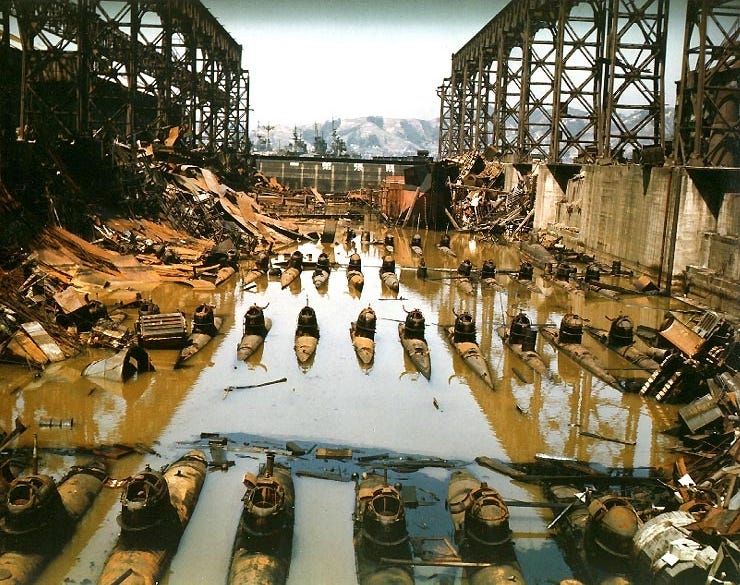
アメリカ人は傍受して降伏する日本の意図を知っていた The Americans knew of Japan’s intent to surrender, having intercepted 7月12日のケーブルa July 12 cable 東郷重典外相から, 佐 ⁇ 直武駐日大使に、“国内外で日本が直面している差し迫った状況のため、戦争の終結を密かに検討していることを通知する。” from Japanese Foreign Minister Shigenori Togo, informing Japanese ambassador to Russia Naotake Sato that “we are now secretly giving consideration to the termination of the war because of the pressing situation which confronts Japan both at home and abroad.”
トーゴは佐 ⁇ に、戦争の終結にロシアを利用することが可能である範囲について、“サウンド[ロシアの外交官ビャチェスラフモロトフ]に告げた。” トーゴは当初、佐 ⁇ にロシアを使って戦争を終わらせることへの日本の関心を曖昧にするように言いました、しかし、数時間後、彼はその指示を撤回しました, “戦争を終わらせるという私たちの一般的な態度をロシア人に明らかにすることは適切であると言う” —日本が“を持っていることは絶対に彼女が領土を併合または保持することを知らない 戦争中に占領された。” Togo told Sato to “sound [Russian diplomat Vyacheslav Molotov] out on the extent to which it is possible to make use of Russia in ending the war.” Togo initially told Sato to obscure Japan’s interest in using Russia to end the war, but just hours later, he withdrew that instruction, saying it would be “suitable to make clear to the Russians our general attitude on ending the war”— to include Japan’s having “absolutely no idea of annexing or holding the territories which she occupied during the war.”
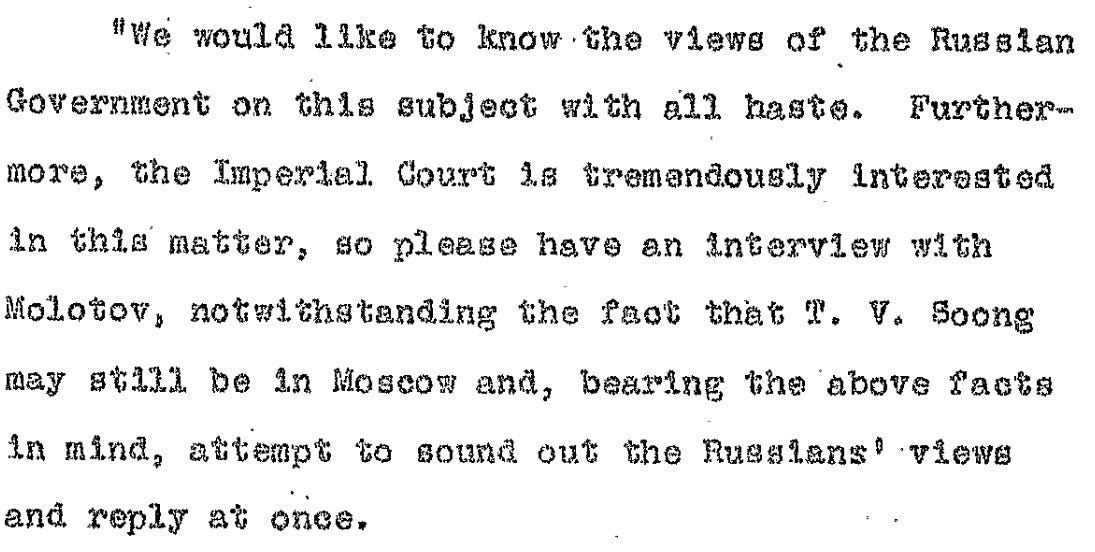
日本の中心的な関心事は、半神と見なされた皇帝ヒロヒトの保持でした。これを知っていても—、多くの米国当局者が皇帝の保持が戦後の移行を通じて日本社会を助けることができると感じている—トルーマン政権は無条件の降伏の要求を発行し続け, 皇帝が屈辱またはさらに悪いことに免れることを保証しません。 Japan’s central concern was the retention of its emperor, Hirohito, who was considered a demigod. Even knowing this — and with many US officials feeling the retention of the emperor could help Japanese society through its postwar transition —the Truman administration continued issuing demands for unconditional surrender, offering no assurance that the emperor would be spared humiliation or worse.
で In a 7月2日の覚書July 2 memorandum, 戦争長官ヘンリー・スティムソンは、その月のポツダム会議の終わりに発行される降伏条項の宣言を起草しました。彼はトルーマンに、“もし…彼女の現在の王朝の下で立憲君主制を除外しないことを付け加えなければならない、それは実質的に受け入れの可能性を増すだろうと忠告した。” , Secretary of War Henry Stimson drafted a terms-of-surrender proclamation to be issued at the conclusion of that month’s Potsdam Conference. He advised Truman that, “if…we should add that we do not exclude a constitutional monarchy under her present dynasty, it would substantially add to the chances of acceptance.”
しかし、トルーマンと国務長官ジェームズ・バーンズは、皇帝についての保証を与えるための勧告を拒否し続けました。決勝 Truman and Secretary of State James Byrnes, however, continued rejecting recommendations to give assurances about the emperor. The final ポツダム宣言Potsdam Declaration, 7月26日発行、Stimsonの推奨言語を省略し、厳格に宣言します“以下は私たちの条件です。それらから逸脱することはありません。” , issued July 26, omitted Stimson’s recommended language, sternly declaring, “Following are our terms. We will not deviate from them.”
これらの用語の1つは、皇帝を危険にさらすと合理的に解釈できます: “日本の人々をだまして世界の征服に乗り出すように騙した人々の権威と影響力を常に排除しなければなりません。” One of those terms could reasonably be interpreted as jeopardizing the emperor: “There must be eliminated for all time the authority and influence of those who have deceived and misled the people of Japan into embarking on world conquest.”
同時に、米国はその手ごわい新しい武器を配備する準備をしていた、ソビエト連邦は軍隊をヨーロッパの前線から北東アジアに移していた。At the same time the United States was preparing to deploy its formidable new weapons, the Soviet Union was moving armies from the European front to northeast Asia.
5月に, In May, スターリンは米国大使に言ったStalin told the US ambassador ソビエト軍は、満州の日本人を8月8日までに攻撃するように配置されるべきである。7月、トルーマンはソビエトが新たな戦線を開く影響を予測した。で that Soviet forces should be positioned to attack the Japanese in Manchuria by August 8. In July, Truman predicted the impact of the Soviets opening a new front. In a 日記エントリdiary entry ポツダム会議中に作成された彼は、スターリンが8月15日のジャップ戦争に参加することを“に保証したと書いています。 made during the Potsdam Conference, he wrote that Stalin assured him “he’ll be in the Jap War on August 15th. フィニFini それが起こるとき、ジャップ。” Japs when that comes about.”
スターリンの当初のスケジュールで、ソビエト連邦は8月6日の広島爆撃の2日後に日本に戦争を宣言した。その同じ日— 8月8日—ヒロヒト皇帝は、彼の統治を維持する交渉された降伏を追求したいと国の民間指導者に話しました。Right on Stalin’s original schedule, the Soviet Union declared war on Japan two days after the August 6 bombing of Hiroshima. That same day — August 8 — Emperor Hirohito told the country’s civilian leaders that he still wanted to pursue a negotiated surrender that would preserve his reign.
8月9日、ソビエトの攻撃が始まった On August 9, Soviet attacks commenced on 3つのフロントthree fronts。. スターリンの侵略のニュースNews of Stalin’s invasion 満州のヒロヒトは、長 ⁇ ストライキの1時間前の午前10時に降伏—について話し合うために新しい会議を招集するように促しました。最終的な降伏の決定は8月10日に行われました。 of Manchuria prompted Hirohito to call a new meeting to discuss surrender — at 10 am, one hour before the strike on Nagasaki. The final surrender decision came on August 10.
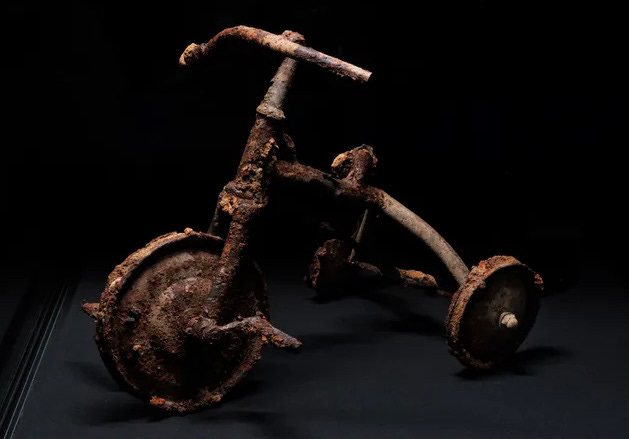
ソビエトのタイムラインは、原子爆弾をさらに厄介にします: 何十万人もの民間人を焼却して照射することを適切にためらっている米国政府は、ソビエトの戦争宣言が日本の計算にどのように影響したかを最初に見たいと思うでしょう。The Soviet timeline makes the atomic bombings all the more troubling: One would think a US government that’s appropriately hesitant to incinerate and irradiate hundreds of thousands of civilians would want to first see how a Soviet declaration of war affected Japan’s calculus.
結局のところ、日本の降伏は、ソビエトが日本との戦争に参加したことによって実際に促されたようです— As it turns out, the Japanese surrender indeed appears to have been prompted by the Soviet entry into the war on Japan — ない not 原爆によって。“日本の指導部は、原爆の写真やビデオの証拠がなかったため、広島の破壊は、日本がすでに受けた数十の従来のストライキと同様であると考えました,”はJosiah Lippincottに by the atomic bombs. “The Japanese leadership never had photo or video evidence of the atomic blast and considered the destruction of Hiroshima to be similar to the dozens of conventional strikes Japan had already suffered,” wrote Josiah Lippincott at アメリカ保守派The American Conservative。.
悲しいことに、証拠は、日本の降伏への関心を無視しただけでなく、それ自体が目的として日本の都市に原爆を投下することを決意した米国政府を指しています, しかし、降伏が上向きになるまで延期されるように努めた Sadly, the evidence points to a US government determined to drop atomic bombs on Japanese cities as an end in itself, to such an extent that it not only ignored Japan’s interest in surrender, but worked to ensure that surrender was delayed until after upwards of 210,000人—不釣り合いに女性、子供、高齢者—が殺されました210,000 people — disproportionately women, children and elderly — were killed 2つの都市で。 in the two cities.
間違いありません。これは、民間人を意図的に狙ったものでした。広島と長 ⁇ は手付かずのものだったので選ばれ、爆弾’パワーを完全に ⁇ 露することができました。広島には小さな軍事本部がありましたが、両方の都市が始まった戦略的爆撃キャンペーンに触れられていなかったという事実 Make no mistake: This was a deliberate targeting of civilian populations. Hiroshima and Nagasaki were chosen because they were pristine, and could thus fully showcase the bombs’ power. Hiroshima was home to a small military headquarters, but the fact that both cities had gone untouched by a strategic bombing campaign that began 14か月前14 months earlier 彼らの軍事的および産業的重要性を証明します。 certifies their military and industrial insignificance.
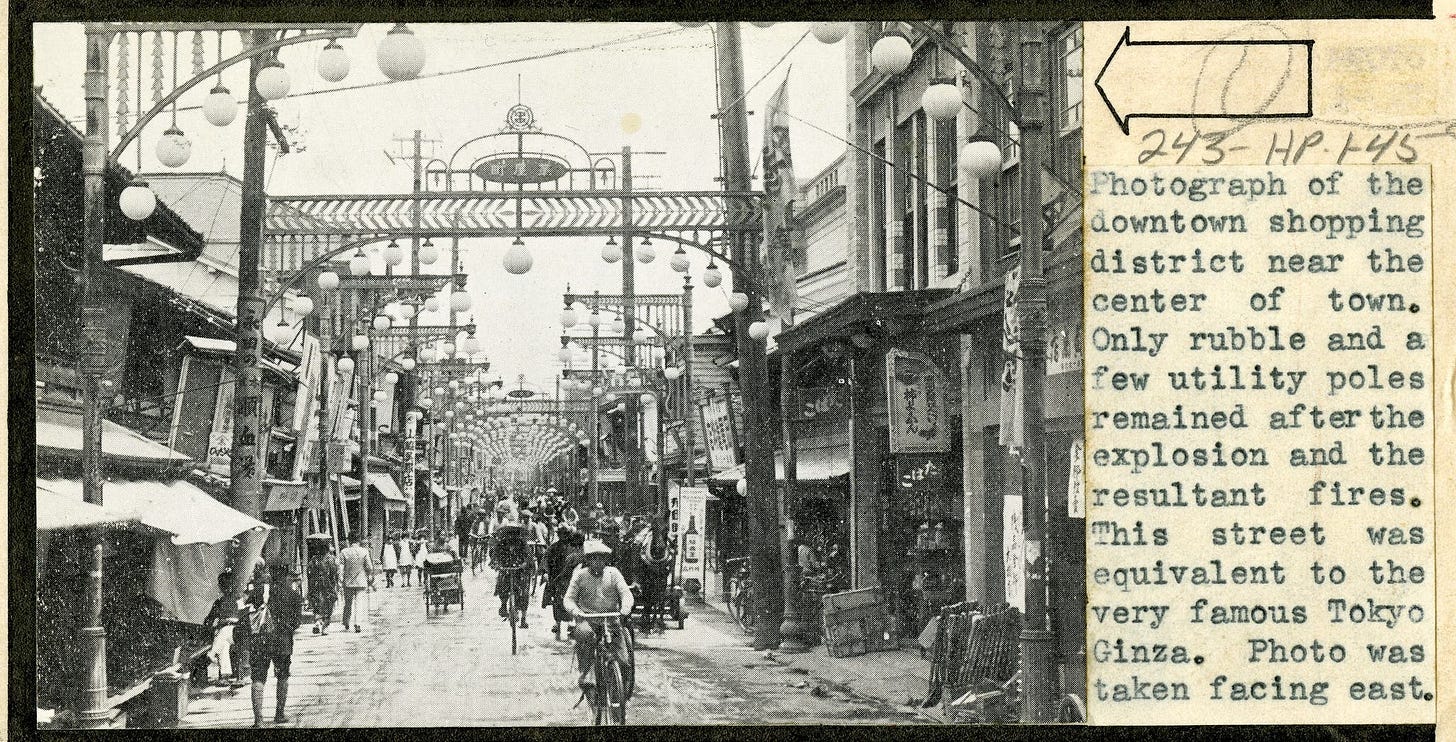
“日本人は降伏する準備ができていて、そのひどいことで彼らを殴る必要はありませんでした”アイゼンハワーは後で “The Japanese were ready to surrender and it wasn’t necessary to hit them with that awful thing,” Eisenhower would later 言うsay。“私は私たちの国がそのような武器を最初に使用するのを見るのが嫌いでした。”. “I hated to see our country be the first to use such a weapon.”
彼のパイロットによると, According to his pilot, ダグラス・マッカーサー将軍General Douglas MacArthur, 米陸軍太平洋の司令官である“は、このフランケンシュタインのモンスターに失望し、落ち込んでいた。” , commander of US Army Forces Pacific, was “appalled and depressed by this Frankenstein monster.”
“爆弾を投下する決定についてマッカーサー将軍に尋ねたとき、”ジャーナリストのノーマンカズンズを書いた、“彼が相談さえされなかったことを知って驚いた…彼は爆弾の投下について軍事的正当化を見なかった。戦争は数週間前に終わったかもしれないと彼は言った、もしアメリカが後でとにかくそうしたように、皇帝の制度の保持に同意したならば。”“When I asked General MacArthur about the decision to drop the bomb,” wrote journalist Norman Cousins, “I was surprised to learn he had not even been consulted…He saw no military justification for the dropping of the bomb. The war might have ended weeks earlier, he said, if the United States had agreed, as it later did anyway, to the retention of the institution of the emperor.”
では、広島と長 ⁇ を原爆で壊滅させる目的は何だったのでしょうか?What then, was the purpose of devastating Hiroshima and Nagasaki with atomic bombs?
重要な洞察は、マンハッタンプロジェクトの物理学者レオシラードから来ています。1945年、シラードは A key insight comes from Manhattan Project physicist Leo Szilard. In 1945, Szilard organized 請願a petition, , 署名されたsigned マンハッタンプロジェクトの科学者70名により、最初に国に降伏の機会を与えることなく、日本に対して原爆を使用しないようにトルーマンに要請しました。 by 70 Manhattan Project scientists, urging Truman not to use atomic bombs against Japan without first giving the country a chance to surrender, on terms that were made public.
1945年5月、シラードはバーンズ国務長官と面会し、原子抑制を要請した。バーンズは嘆願を受け入れませんでした。シラード—要点を起草した科学者 In May 1945, Szilard met with Secretary of State Byrnes to urge atomic restraint. Byrnes wasn’t receptive to the plea. Szilard — the scientist who’d drafted the pivotal 1939年の手紙1939 letter FDRに原子爆弾の開発を要請するアルバートアインシュタインから— from Albert Einstein urging FDR to develop an atomic bomb — 再集計recounted: :
“「[ Byrnes ]は、ロシアの戦後の行動を懸念していた。ロシア軍はハンガリーとルーマニアに移動しており、バーンズはロシアにこれらの国から彼女の軍隊を撤退させるよう説得することは非常に難しいだろうと考えました “[Byrnes] was concerned about Russia’s postwar behavior. Russian troops had moved into Hungary and Romania, and Byrnes thought it would be very difficult to persuade Russia to withdraw her troops from these countries, that ロシアは、アメリカ軍の力に感銘を受けた場合、より扱いやすくなる可能性があり、爆弾のデモンストレーションはロシアを感動させる可能性があります。Russia might be more manageable if impressed by American military might, and that a demonstration of the bomb might impress Russia.“」“

原爆の聴衆が東京であろうとモスクワであろうと、軍事施設の一部はその力を発揮するための別の方法を擁護しました。Whether the atomic bomb’s audience was in Tokyo or Moscow, some in the military establishment championed alternative ways to demonstrate its power.
海軍長官の特別補佐官であるルイス・シュトラウスは Lewis Strauss, Special Assistant to the Navy Secretary, said he 提案されたproposed “武器は、東京からさほど遠くない、暗号化された木の大きな森で実演されるべきです。クリプトメリアの木は私たちのレッドウッドの日本語版です… [ It ]は、まるでマッチ棒であるかのように、爆発の中心からすべての方向に風に木を配置します, もちろん、それらを中央に放火してください。この種のデモは、私たちが自由に彼らの都市を破壊できることを日本人に証明するように私には思えました。” “that the weapon should be demonstrated over… a large forest of cryptomeria trees not far from Tokyo. The cryptomeria tree is the Japanese version of our redwood… [It] would lay the trees out in windrows from the center of the explosion in all directions as though they were matchsticks, and, of course, set them afire in the center. It seemed to me that a demonstration of this sort would prove to the Japanese that we could destroy any of their cities at will.”
シュトラウス氏は、フォレスタル海軍長官“は心から同意し、”は最終的に、数十万人の非戦闘員を燃やして都市に廃棄物を置く必要がある最適なデモを決定したと語った。金はそこで止まります。Strauss said Navy Secretary Forrestal “agreed wholeheartedly,” but Truman ultimately decided an optimal demonstration required burning hundreds of thousands of noncombatants and laying waste to their cities. The buck stops there.
これらの大量殺人を犯す特定の手段— 31,000フィートの飛行機から落下した孤独な物体—は、アメリカ人の道徳の評価をゆがめるのに役立ちます’。アナロジーを使用して、歴史家 The particular means of inflicting these mass murders — a solitary object dropped from a plane at 31,000 feet — helps warp Americans’ evaluation of its morality. Using an analogy, historian ロバート・ライコRobert Raico 倫理的な明快さを育む: cultivates ethical clarity:
“ 1945年の初めにドイツに侵入したとき、私たちの指導者たちはアーヘンまたはトリーアのすべての住民を処刑すると信じていたと仮定します, または、他のラインラント都市はついにドイツ人の意志を破り、彼らを降伏に導くでしょう。このようにして、戦争は急速に終わり、多くの連合軍兵士の命を救ったのかもしれません。それはそれから、女性や子供を含む何万人ものドイツの民間人を撃つことを正当化したでしょうか?”“Suppose that, when we invaded Germany in early 1945, our leaders had believed that executing all the inhabitants of Aachen, or Trier, or some other Rhineland city would finally break the will of the Germans and lead them to surrender. In this way, the war might have ended quickly, saving the lives of many Allied soldiers. Would that then have justified shooting tens of thousands of German civilians, including women and children?”
原爆を投下することで50万人のアメリカ人の命が救われたという主張は、空っぽではありません。トルーマンが頑固に拒否し、日本の皇帝の保持について事前に保証することは間違いなくあります The claim that dropping the atomic bombs saved a half-million American lives is more than just empty: Truman’s stubborn refusal to provide advance assurances about the retention of Japan’s emperor arguably 費用cost アメリカ人の生活。 American lives.
それは、必要以上に長く続いた日本との戦争だけでなく, しかし、米国が招待したソビエトによる北東アジアの日本領土侵攻によって引き起こされた朝鮮戦争についても。36,000人以上の米軍兵士が朝鮮戦争—で驚異的な死を遂げた That’s true not only of a war against Japan that lasted longer than it needed to, but also of a Korean War precipitated by the US-invited Soviet invasion of Japanese-held territory in northeast Asia. More than 36,000 US service members died in the Korean War — among a staggering 250万2.5 million 第38パラレルの両側で軍人と民間人の死者が出た。 total military and civilian dead on both sides of the 38th Parallel.
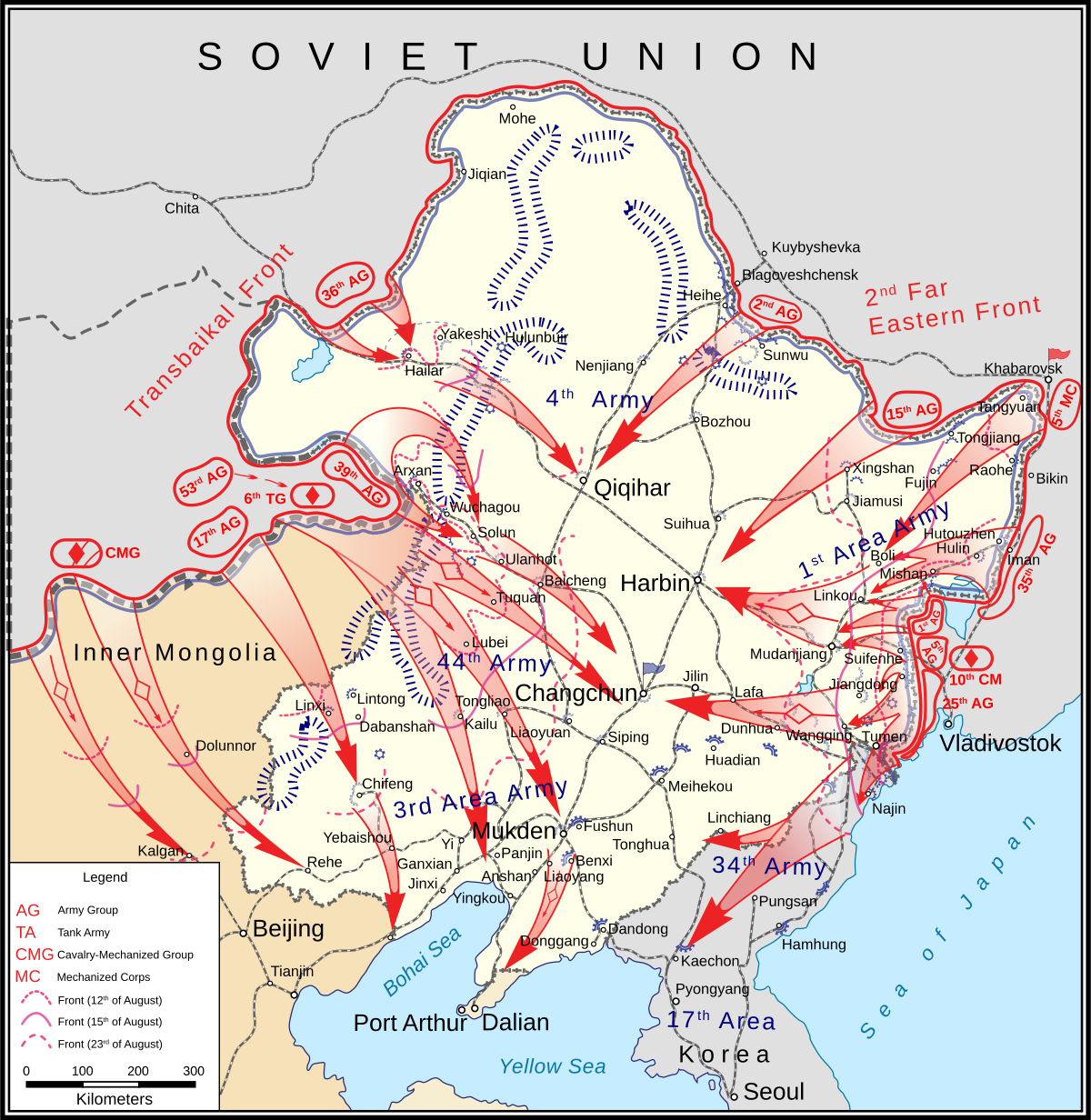
私たちは、私たちのシステムを、文民指導者の優位性が軍事的決定に対する合理的で穏健な力として機能するシステムと考えたいと思います。第二次世界大戦で最も尊敬されている軍事指導者—の希望に反する広島と長 ⁇ の不必要な原爆—は、それ以外のことを教えてくれます。We like to think of our system as one in which the supremacy of civilian leaders acts as a rational, moderating force on military decisions. The needless atomic bombing of Hiroshima and Nagasaki — against the wishes of World War II’s most revered military leaders — tells us otherwise.
悲しいことに、広島神話の破壊的な影響は、1945年8月の出来事に対するアメリカ人’の理解に限定されていません。“広島神話のヒントとメモがあり、現代を通じて存続します。”国務省の内部告発者であり、著者のピーターヴァンビューレンが言った Sadly, the destructive effects of the Hiroshima myth aren’t confined to Americans’ understanding of events in August 1945. “There are hints and notes of the Hiroshima myth that persist all through modern times,” State Department whistleblower and author Peter Van Buren said on スコットホートンショーThe Scott Horton Show。 .
広島の神話は、アフガニスタンでのドローンストライキで虐殺された女性や子供であろうと、海外での米国の行動に関連する民間人の犠牲者への ⁇ 落した無関心を助長します, The Hiroshima myth fosters a depraved indifference to civilian casualties associated with US actions abroad, whether it’s women and children slaughtered in a drone strike in Afghanistan, 数十万人が死んだhundreds of thousands dead 不当なイラク侵攻、または死んだ赤ん坊 in an unwarranted invasion of Iraq, or a baby who dies for 輸入薬の不足lack of imported medicine 米国認可のイランで。 in US-sanctioned Iran.
結局のところ、広島の神話を受け入れることは、真に不 ⁇ な原則を受け入れることです。それは、正しい状況では、政府が無実の民間人に意図的に害を及ぼすことが正しいということです。爆弾や制裁によって害が及ぶかどうかにかかわらず、それは哲学です Ultimately, to embrace the Hiroshima myth is to embrace a truly sinister principle: That, in the correct circumstances, it’s right for governments to intentionally harm innocent civilians. Whether the harm is inflicted by bombs or sanctions, it’s a philosophy that アルカイダの道徳を反映mirrors the morality of al Qaeda。 .
無条件の降伏に対するトルーマンの主張は、ウクライナで交渉された平和を追求することに対するバイデン政権の完全な無関心によって反映されているため、1945年から2023年までを結ぶ唯一のスレッドではありません。That’s not the only thread connecting 1945 to 2023, as Truman’s insistence on unconditional surrender is echoed by the Biden administration’s utter disinterest in pursuing a negotiated peace in Ukraine.
今日, 日本に投下された爆弾よりもそれぞれ1000倍強力な6,000の核弾頭を持つ敵に立ち向かう—バイデン自身の頑固な戦争の永続化は、私たち全員を共有する危険にさらされています 広島と長 ⁇ の無実の運命。 Today, confronting an adversary with 6,000 nuclear warheads — each a thousand times more powerful than the bombs dropped on Japan — Biden’s own stubborn perpetuation of war puts us all at risk of sharing the fate of Hiroshima and Nagasaki’s innocents.

広島の神話を根絶しましょう:この記事を共有してください」
カテゴリー
歯科矯正コラム一覧
- やはりオードリーは美しい!Renewal「オードリー・ヘップバーンの顔」:「6歳以下の子供の顔を見て成人した顔を予測することなどできない」
- 『「みにくいアヒルの子」時代』(子どもの正中離開)について・・・多くの歯科医が勘違いしているのでは?・・・
- ☆2022年度夏季休診日等のお知らせ☆夏の甲子園野球を応援しましょう!
- ☆2022年度GWの休診日のお知らせ☆
- 医師いしいじんぺいせんせいの言葉 『5才から11才の君へ』
- これは「デマ」ではありません:「マスク」を外して爽やかな「笑顔」を 発信
- 過剰診療はしない.「ヨンヨン」抜歯はしない。
- 拡大ねじ付き床装置では発音ができない、鼻呼吸の邪魔になる
- 拡大ネジ床矯正はするな(DBA「間違いだらけの床矯正」より)
- 育児・アタッチメント・スキンシップ(DBA「間違いだらけの床矯正」より)

